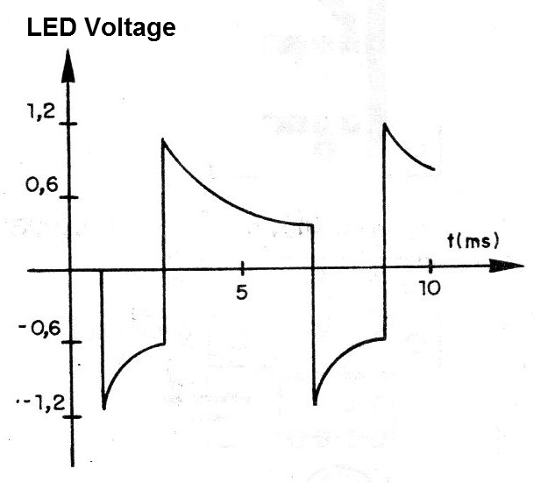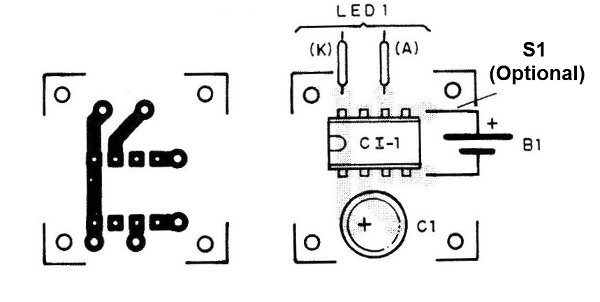One of the problems of using LEDs in low voltage circuits is that this type of component needs a voltage of at least 1, 6 volts (if red) to light.
Taking into account the natural voltage drop in the drive devices it is clear that its use from a battery power supply is impossible unless there is a special circuit like the one presented in this article that contains the features to raise the voltage through of an internal folder and thereby trigger LEDs with voltage sources from 1.1 Volts.
The simplicity of the circuit makes it ideal for gift applications in toys, signage, games and other cases where a minimum of external components is required.
In fact, to produce a blinker we only need a capacitor, besides the integrated one, the LED and the voltage source that can be a battery (from small to medium, large to medium common).
The LM3909, which we will use as flasher in this article can also be employed as audio oscillator, amplifier, trigger, alarm and other applications that are covered in articles from the site
. For our project we suggest the use in gifts, objects for the home like, for example, a wall or table reminder, toys, etc. as shown in figure 1.

But surely the reader who likes to experiment will find in this component a 'full plate' since it is protected in such a way that no combination of external connections, even if wrong will cause the destruction of the component and its power can be made with voltages between 1.1 and 40 Volts!
Characteristics
Supply voltage: 1.5 V
Average current: 0.1 mA
Active LED cycle: 1%
Current with LED off: 0.05 mA
HOW IT WORKS
In this article we will give only a brief description of our basic project since the LM3909 is the target of a complete article in the site where we also have many diagrams.
The LM3909, as explained, consists of a special oscillator, flasher, trigger, or alarm integrated in an 8-pin DlL enclosure by National Semiconductor.
This integrated has 4 transistors that allow its operation as oscillator, trigger or amplifier depending on the connections and the additional external elements.
Increasing the voltage across the LED is done by taking advantage of the capacitor load and its switching so that both negative and positive pulses are produced in the load, thus increasing the potential difference, in the case of a 1.5 volt peaks of 2.2 Volts (figure 2).

In this way, we guarantee the application in the LED of a tension enough to make it lead and light for a brief moment.
In our circuit the only external component that is the capacitor C1 determines the frequency of the blinking units can be used from 220 uF to 470 uF. To obtain a very compact assembly it is interesting to choose units with low working voltages, starting at 3 Volts.
ASSEMBLY
In figure 3 we have the complete diagram of our blinker.

In figure 4 we give the suggestion of printed circuit board that, as we can see is extremely small.

The LED may be red or other colored, remembering that yellow and green have higher operating voltage. For power we can use from a button cell (1.2 V) to small, medium or large batteries that will have enormous durability in this circuit.
Switch S1 is optional and depends on the application for the appliance.
In figure 5 we have some suggestions of objects in which could be using the circuit successfully.

PROOF AND USE
To test the appliance, simply insert the battery and check if the LED flashes.
Be careful not to reverse. To use just install on the desired object.
CI-1 - LM3909 - National Circuit
LED1 - Common red LED
C1 - 220 uF at 470 uF x 3 V - electrolytic capacitor
B1 - 1.2 to 1.5V - battery (see text)
Miscellaneous: printed circuit board, wires, object for assembly.